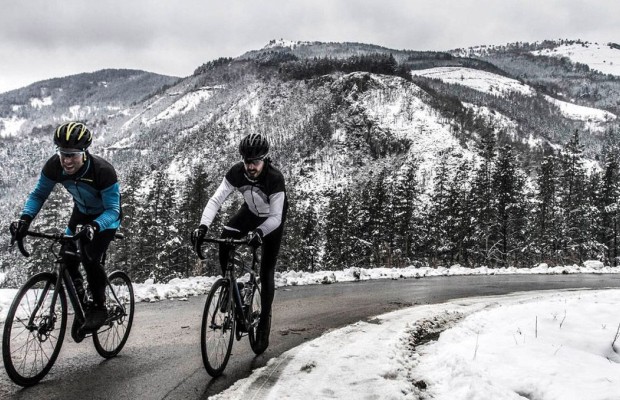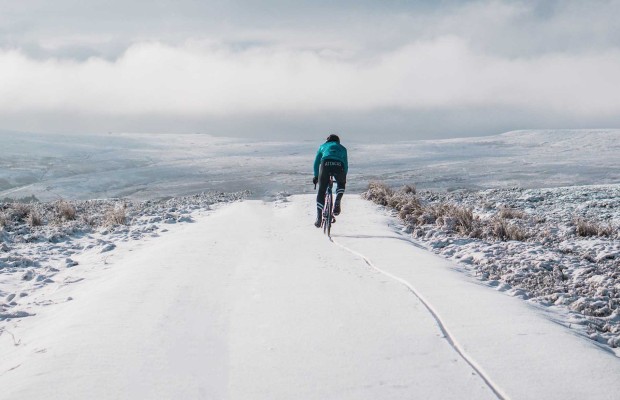How would bikes be if there were no UCI rules
At the end of the 90s, the evolution of bike designs with the popularization of carbon fiber threatened to completely transform the image we have of this machine. The UCI took action and established that competition bikes should have a traditional structure with a double triangle and wheels of the same size. Who knows how bikes would be today if they hadn't done that.

This is how the UCI ensured that bikes continued to look like bikes
Since the late 19th century, when old velocipedes gave way to what was then known as a "safety bicycle," the general design of bikes has evolved little. A frame formed by a main triangle and a rear one between which the wheel is placed, while the front wheel is fixed to a fork attached to one of the vertices of the main triangle with a bearing system that allows it to turn to steer the bike.
At the bottom vertex, the pedals are fixed, which, through a gear system and a chain, transmit the force exerted by the cyclist to the rear wheel. A system that has remained, obviously with corresponding evolutions, essentially unchanged to this day.
RECOMENDADO

Cycling tips for the Christmas season

What would you do if you won the lottery? This cyclist bought himself a €20,000 bike

The best exercise routine to do at home

Benefits of training in the cold

The cyclist's patience: how long, gentle training sessions build your best season

Tips for cycling in the rain

For decades in cycling competition, there was hardly any concern because that design was the most effective and resistant way to join the steel tubes that made up the bikes. Meanwhile, cyclists tried to find the lightest bikes possible to tackle the mountain passes where races are decided.
However, in the late 80s, bike manufacturing began to change. First came the arrival of aluminum frames that, with technologies like hydroforming, gave manufacturers greater flexibility in building bikes. The tubes no longer had to be round but began to elongate in the shape of a drop of water seeking better wind penetration, and time trial bikes began to differentiate from those used on a daily basis on the road.

And, by the 90s, the first radical change arrived when the Taiwanese company Giant, the largest brand in the world, burst onto the scene with the ONCE team with a design that broke molds compared to everything that had been done up to that point, where the horizontal tube was no longer horizontal but, in what they called compact geometry, it sloped diagonally to join with the seat tube seeking a lighter and more solid bike.
Practically at the same time, carbon fiber began to be incorporated into the catalogs of brands, and time trial bikes were the first to benefit from the design flexibility they provided, beginning to appear spectacular monocoques like the remembered Pinarello Espada with which Miguel Indurain broke the hour record.

It is here where the UCI begins to realize that things are getting out of hand. On the one hand, bikes are getting lighter and lighter in a race without limits that, on many occasions, resulted in machines that were very unstable at high speeds, so in the year 2000, they introduced the minimum weight for competition bikes of 6.8 kg. A little later, they acted on the increasingly spectacular time trial bikes by imposing the obligation to maintain a traditional double triangle design and prohibiting the use of wheels of different sizes as was common in the bikes of the time.
Rules that have evolved over the years to mainly curb the aerodynamic performance of bikes, which currently have to adapt to templates contained in the regulations.
The UCI closed the circle of its control over bikes used in competition with the introduction of the bike verification system that it introduced in 2011, with which any bike that can be used in competition must have been approved by this organization. For this, manufacturers must submit the designs to the UCI for approval, which is reflected in the characteristic sticker that most current models display on their seat tube.
What if the UCI hadn't intervened?
It is difficult to know how road bikes would have evolved without the limitations set by the UCI. However, we can get a fairly general idea if we look at the world of long-distance triathlon, where we can find time trial bikes with truly galactic designs due to the lack of limitations on the bike's structure or the position the triathlete can adopt on the bike.

However, in many cases, brands still resort to the double triangle design, which, despite everything, has proven to be tremendously effective over the decades in combining different qualities such as the lightest possible weight, structural rigidity, and the increasingly omnipresent aerodynamics. Besides, it is also necessary to take into account that triathlon is not entirely free from the influence of the UCI, as it is very expensive to develop a specific time trial bike for triathlon and another for the road, with brands often choosing to develop a single model for both disciplines, only equipping the triathlon bike with aerodynamic accessories such as integrated hydration systems.